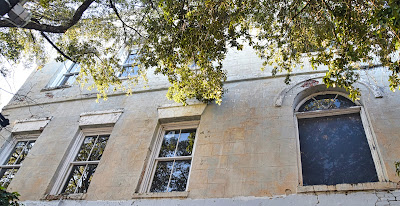Last week, we looked at 100-year-old recipes. Today, we're still talking about food, but from a little different perspective. I've been wondering recently how many rural counties in the United States, other than Williamsburg, can boast of not one, but two, chefs who have worldwide reputations. And to be even more to the point, how many communities the size of Nesmith can say that two world-renowned chefs were born there? Of course, I'm talking about Rodney Scott and the late Sylvia Woods.
Rodney's first cookbook, Rodney Scott's World of BBQ, hit bookstores last week. It is already a #1 bestseller on Amazon: #1 in Barbecuing and Grilling; #5 in Southern US Cooking, Food, and Wine; and #11 in Celebrity and TV Show Cookbooks. It is also the first cookbook ever published by a Black pitmaster.
Rodney, the son of Ella and the late Roosevelt "Rosie" Scott, was born near Nesmith, and grew up in the Nesmith-Hemingway area. His parents were hog farmers who opened Scott's Variety Store and Bar-B-Que at Brunson Crossroads in the early 1970s. Rodney learned from his parents, and he writes that growing up, he always imagined being able to cook for people all over the world. In the past few years, he has seen that dream come true, cooking in Australia, Belize, Colombia, France, Uruguay, and all over this country.
And even before that, people from all over were finding their way to Scott's near Hemingway to sample what they had seen Anthony Bourdain eating on television. Before COVID, I spent some interesting weekend middays standing in line at Scott's where I've met people from Maine to California. And I've had some fascinating conversations. I particularly enjoyed giving a couple of Californians instructions on how to eat boiled peanuts.
In 2017, Rodney branched out, opening Rodney Scott's Whole Hog BBQ in Charleston with Nick Pihakis. They have since expanded to Birmingham, AL, and Atlanta, GA. In 2018, he captured one of the highest accolades in the restaurant industry when he received the James Beard Award for Best Chef in the Southeast. Food & Wine magazine put Rodney Scott's Charleston location on its list of the "40 most important restaurants in the last 40 years."
A generation earlier, Sylvia Pressley was also born near Nesmith. Sylvia, too, grew up near Hemingway. Before she was out of junior high school, she had gone to night school to get her beautician's license, but she had also set her sights on leaving Hemingway for the bright lights of New York. When she married her high school sweetheart, Herbert Woods, they moved to the Big Apple, and Sylvia found work waiting tables at Johnson's Luncheonette in Harlem. In 1962, she was able to buy the restaurant, and the rest, as they say, is history.
Sylvia became known as the "Queen of Soul Food," and Sylvia's Restaurant™became so well-known that in 2017 it was named one of the "Magnificent 10 Restaurants That Changed America."
Sylvia Woods authored two cookbooks during her long career: Sylvia's Soul Food in 1992, and Sylvia's Family Soul Food Cookbook in 1999. The latter book contains recipes from friends and family from Hemingway to Harlem. In the introduction, Sylvia wrote, "Hemingway, South Carolina, where my husband Herbert and I grew up and have our roots, probably has more great cooks per square inch than you would find in most cooking schools."
When Sylvia Woods died at age 86 on July 19, 2012, the Rev. Al Sharpton noted that while there are many soul food restaurants in New York, Sylvia's personality "made us all feel like we were home with Mama." I only met Sylvia Woods once, at a book signing at the Hemingway Library for Sylvia's Family Soul Food Cookbook, but during the time I was with her, I felt that I was in the presence of royalty. Although she has passed on, her children and grandchildren are keeping her legacy alive, which includes the restaurant, a line of products, and a catering business.
Sylvia Woods and Rodney Scott share a philosophy about cooking. Love, to them, is the most important ingredient in any recipe. In 1999, Sylvia noted that there is a "spice called LOVE, and it is absolutely essential to everything you fix."
Rodney Scott echoes that sentiment by stating, "I like spreading the joy and sharing the love, and whole-hog barbecue is my means of doing it."
Williamsburg County is blessed beyond measure to be able to claim these two as our own.










